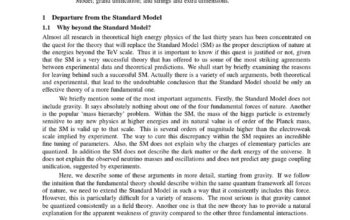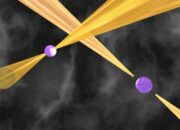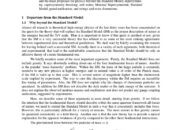Strange matters in the realm of physics often arise from the intricate interplay between fundamental particles, their interactions, and the resultant phenomena that challenge our conventional understanding of matter. One such captivating area of study is the behavior of copper collisions, which can yield a plethora of unexpected effects. These interactions not only expand our comprehension of material science but also stretch into the realms of quantum mechanics and the fundamentals of particle physics. This article endeavors to elucidate the peculiarities observed in copper collisions, showcasing the diverse ramifications and the intricate phenomena that accompany such interactions.
To commence, it is pertinent to acknowledge the essential properties of copper. As a transition metal, copper boasts unique electrical and thermal conductivity, alongside a malleability that is highly esteemed in various applications—from electrical wiring to intricate artwork. Its atomic structure, characterized by a unique electron configuration, allows for diverse bonding scenarios and topological states that can exhibit unusual behavior during collisions at the atomic level.
When copper atoms collide, particularly in high-energy environments, one may observe a fascinating array of phenomena. The most prominent of these occurrences lies in the domain of phase transitions. Under extreme conditions, copper can transition into different phases that exhibit markedly different physical characteristics. For instance, the exploration of copper at high temperatures reveals an ability to transform from its familiar face-centered cubic (FCC) structure into more complex arrangements. Such transformations not only affect the macroscopic properties of the material but also yield strikingly intricate microstructures, which may possess novel electronic and mechanical properties.
A significant focus area of contemporary research includes the study of nano-sized copper particles. These diminutive structures, when subjected to collisions at the nanoscale, behave in ways that significantly diverge from their bulk counterparts. Enhanced surface-to-volume ratios in nanoparticles can lead to phenomena such as sintering—a process wherein particles coalesce upon collision under the influence of thermal energy. This sintering not only alters the physical morphology of the material but also enhances its properties, which has profound implications for applications ranging from catalysis to energy storage solutions.
Moreover, the electron dynamics within colliding copper atoms unveil a realm of quantum effects. When subjected to particle accelerators, copper ions can collide with astonishing energy levels, producing a quark-gluon plasma state—a state of matter thought to exist just after the Big Bang. The theoretical implications of such high-energy collisions are manifold, offering insights into the fundamental forces that govern particle interactions. Such studies also reveal the asymmetry of matter and antimatter, raising profound questions regarding the universe’s composition and the underlying symmetries that dictate particle interactions.
The kinetic energy unleashed during copper collisions further leads to the emission of radiation in the form of X-rays and gamma rays. This emitted radiation serves as a vital tool for researchers. By analyzing the spectral characteristics of this radiation, scientists can elucidate the energetic states and transition pathways engaged during collisions. This spectroscopic data provides invaluable insights into electron configurations and coupling mechanisms, melding atomic behavior with quantum mechanics.
Tracing the implications of copper collisions also leads to the investigation of alloy formations. When copper interacts with other metals during collisions, a fascinating phenomenon known as metallurgical bonding comes into play. Here, metallic bonds between diverse elements can yield materials characterized by enhanced properties, such as increased strength, improved electrical conductivity, and heightened corrosion resistance. This exploration can unveil new avenues for developing high-performance materials suited for demanding applications like aerospace engineering and electronics.
In the operational milieu, the peculiarities of copper collisions are not solely relegated to theoretical investigations. They have pragmatic ramifications in industrial processes. For example, during welding or metal forming operations, understanding the nuances of copper’s behavior under collision can lead to improved techniques, optimizing energy inputs and ensuring structural integrity. The results of experiments assessing the effects of heat and pressure on copper can inform practices that enhance efficiency, reduce waste, and illuminate pathways to sustainable manufacturing processes.
The interdisciplinary nature of research into strange matters, particularly concerning copper collisions, opens doors for collaboration across domains. Physicists, material scientists, and chemists converge to expand the boundary of knowledge. Notably, computational modeling and simulation techniques have emerged as pivotal tools, allowing researchers to predict the outcomes of copper collisions before experimental verification. Such modeling endeavors provide a blueprint to assess various collision scenarios and their potential effects, thereby informing future experimental designs and applications.
Finally, the pursuit of knowledge surrounding copper collisions is still burgeoning, offering fertile ground for future research. As new methodologies and technologies are developed, the enigmatic interactions of copper and their ensuing peculiarities promise to furnish further insights. Exploration into the quantum realm of colliding copper atoms may alter our fundamental understanding of matter, intertwining the realms of solid-state physics and particle physics. In conclusion, strange matters within the scope of copper collisions provide a rich tapestry of phenomena that challenge assumptions, inspire innovations, and beckon successive generations of scientists to unravel the mysteries that lie within the microscopic domain.












